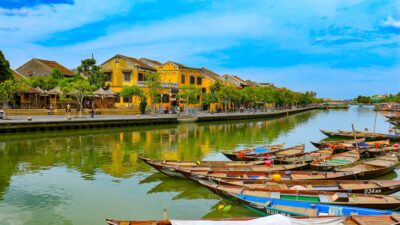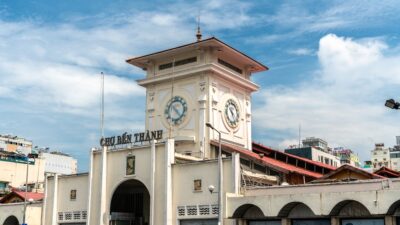Hue, a city steeped in history and beauty, sits on the banks of the Perfume River in central Vietnam. A former imperial capital, Hue offers a unique blend of ancient traditions, architectural marvels, and a tranquil atmosphere. For Indian tourists seeking a captivating cultural experience, Hue provides a fascinating journey through time.
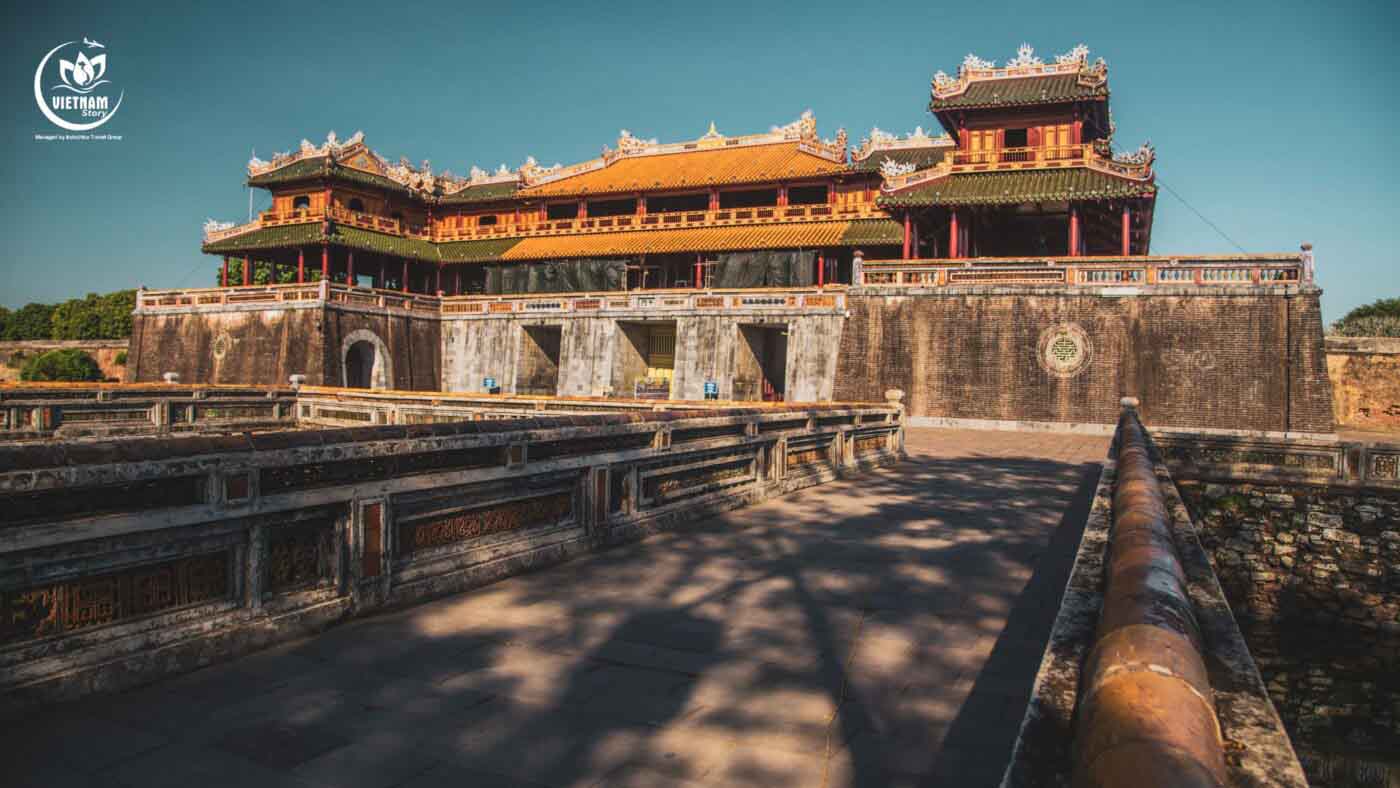
Location & Weather
Hue is situated on the Perfume River in Thua Thien Hue Province, about 650 kilometers south of Hanoi. Its location near the coast provides a pleasant tropical climate.
Located in tropical monsoon climate zone, Thua Thien Hue has 4 seasons spring, summer, autumn and winter. The average temperature in province is 25. The number of yearly sunny hour is 2000 hours. The best time for traveling is from November to April of the following year.
Getting to Hue from India
- Fly to Da Nang: The most common route is to fly from India to Da Nang International Airport (DAD) and then travel to Hue by bus, train or taxi (approx. 2-hour drive).
- Train: A scenic train journey from Hanoi or Saigon to Hue is an option, though it can be a lengthy trip.
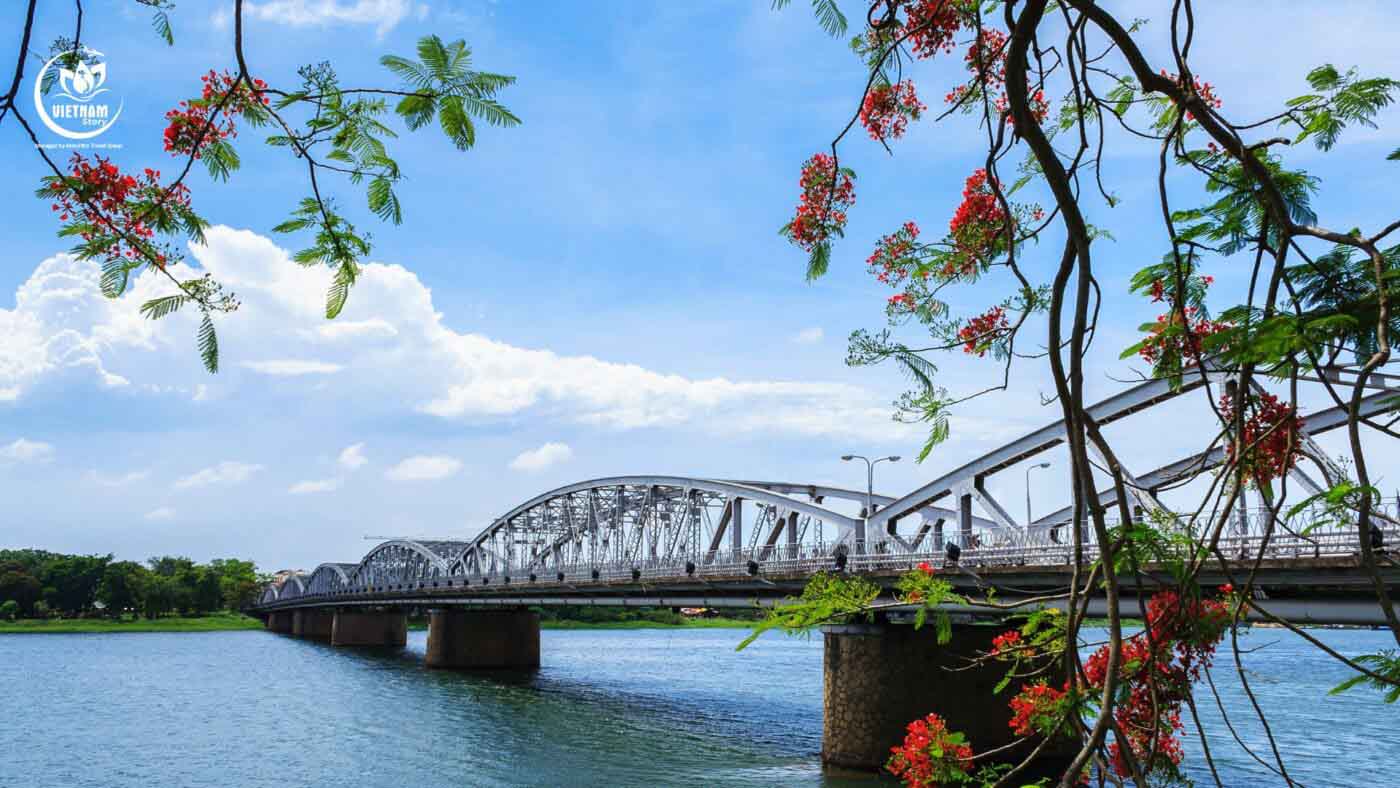
Getting Around Hue
- Cycling: Hue is quite flat and well-suited for cycling. Rent a bicycle to explore the city at your own pace.
- Taxi & Motorbike: Taxis and motorbikes are readily available and convenient for getting around.
- Boat Trips: The Perfume River offers a picturesque way to explore the city.
Attractions in Hue
Hue is a treasure trove of history and culture. Must-see attractions include:
- Imperial Citadel: A UNESCO World Heritage Site, this vast complex showcases the grandeur of the Nguyen Dynasty, including the Forbidden Purple City, the Flag Tower, and the Nine Dynastic Urns.
- Thien Mu Pagoda: A beautiful pagoda perched on the Perfume River, known for its iconic seven-tiered tower.
- Tomb of Tu Duc: An impressive complex with beautiful gardens, a lake, and a majestic mausoleum.
- Khai Dinh Tomb: A unique blend of traditional and modern architecture, adorned with intricate decorations, mosaics, and sculptures.
- Tomb of Minh Mang: Another impressive tomb complex, showcasing the beauty of the Nguyen Dynasty’s architecture.
- Tomb of Gia Long: The first emperor of the Nguyen Dynasty is buried here, offering a glimpse into the early history of the dynasty.
- Dong Ba Market: A bustling market where you can find local handicrafts, souvenirs, and fresh produce.
- Bach Ma National Park in central Vietnam is a nature lover’s paradise, offering diverse landscapes, challenging hikes, and a chance to spot rare wildlife like the saola and red-shanked douc langur. Explore dense rainforests, cascading waterfalls, and mountain peaks, all while enjoying the tranquility of this stunning reserve.
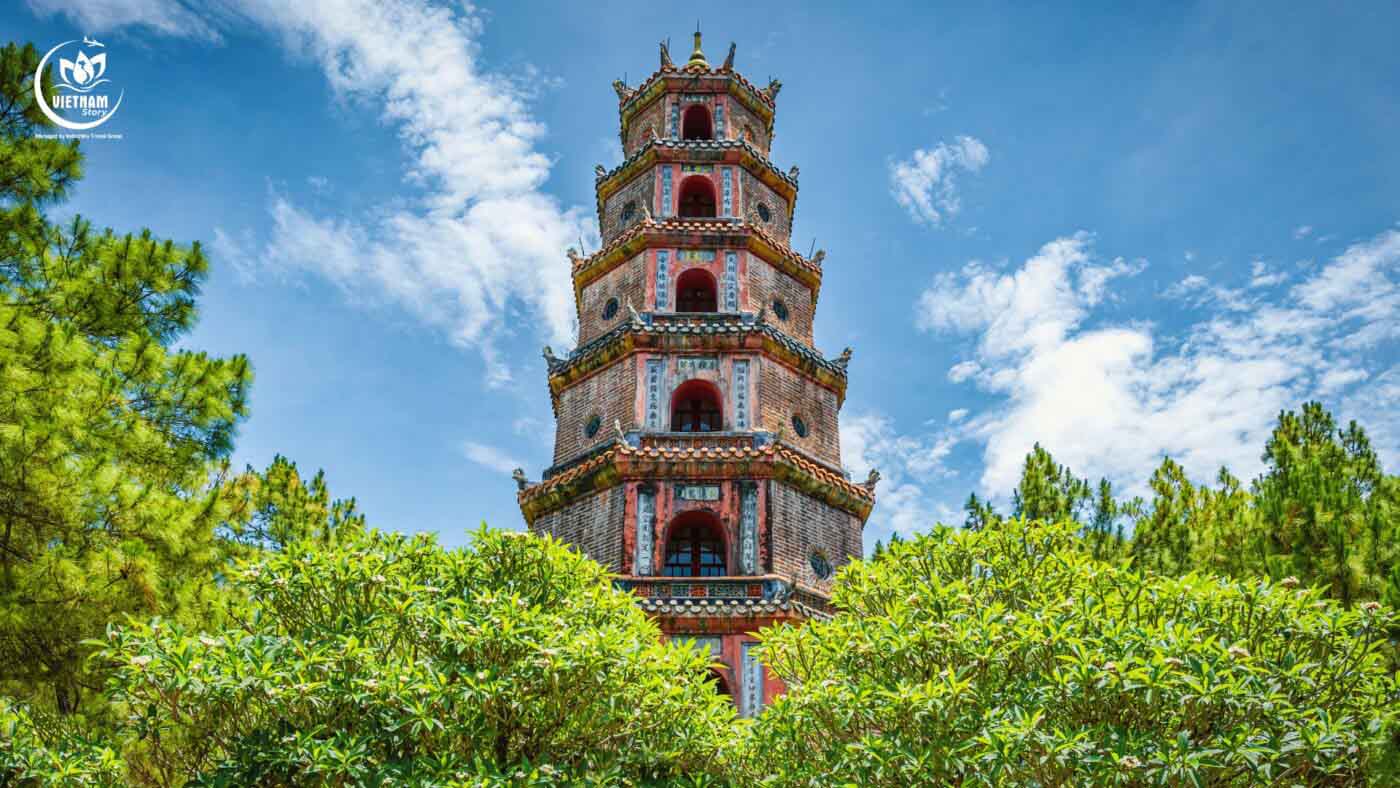
Accommodation
Hue offers a range of accommodation options, from luxury hotels to budget-friendly homestays.
- Hotels: Popular choices include the Pilgrimage Village Resort & Spa, La Residence Hue Hotel & Spa, and the Avani+ Hue Resort & Spa.
- Homestays: For a more authentic experience, consider staying in a homestay with local families.
Top Things to Do in Hue
- Explore the Imperial Citadel: Take a guided tour to discover the history and architecture of this fascinating complex.
- Boat Trip on the Perfume River: Enjoy a scenic boat ride along the river, taking in the beautiful scenery and visiting Thien Mu Pagoda.
- Visit the Tombs: Explore the tombs of the Nguyen Dynasty emperors, each showcasing unique architectural styles and gardens.
- Learn about the Royal Cuisine: Take a cooking class and learn how to prepare traditional Hue dishes.
- Attend a Royal Performance: Experience the rich cultural heritage of Hue by attending a traditional musical performance or a water puppet show.
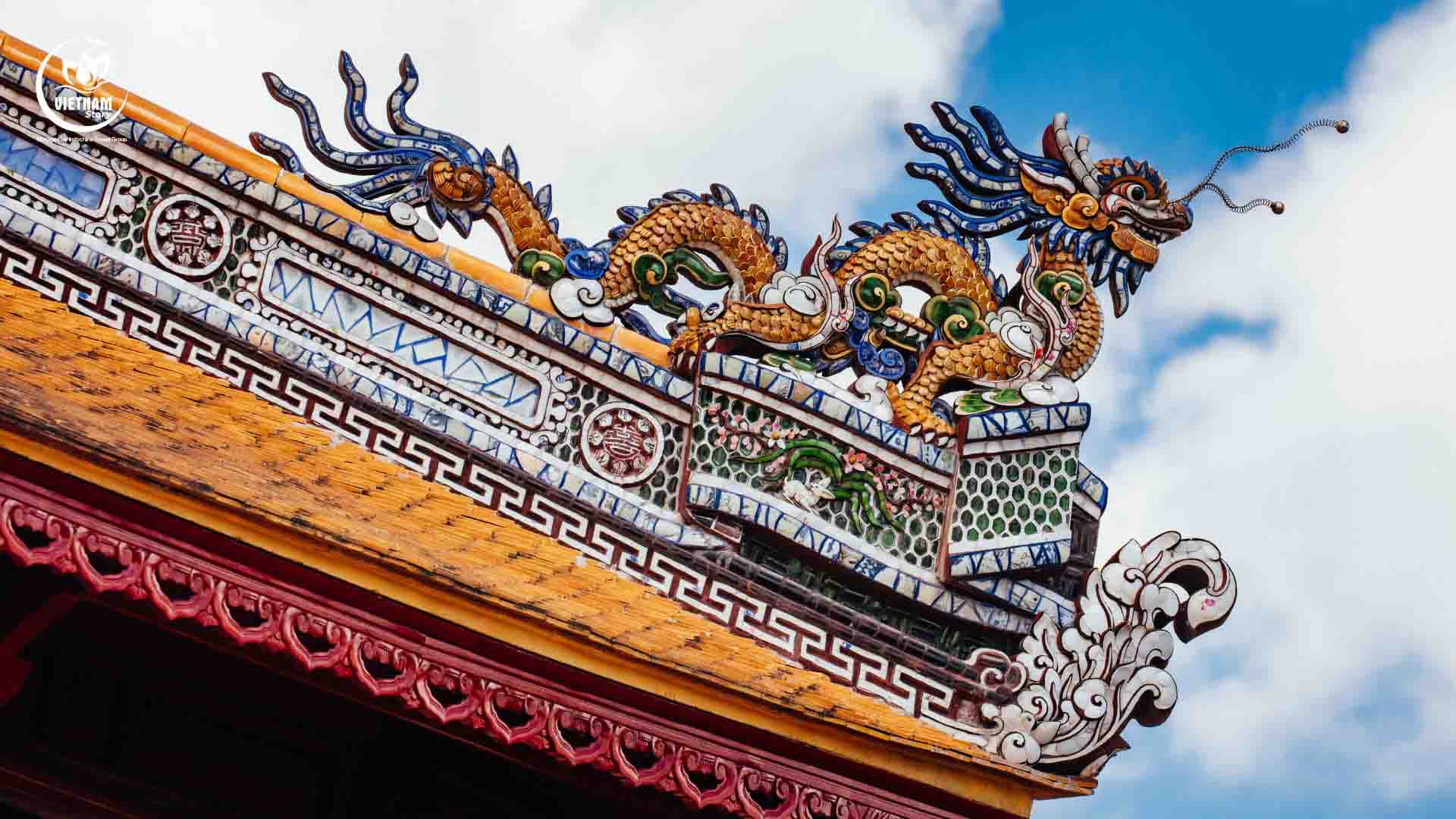
What & Where to Eat & Drink
Hue is renowned for its unique cuisine, featuring a blend of fresh ingredients, delicate flavors, and traditional techniques.
Must-Try Dishes
- Bun bo Hue (Hue beef noodle soup): This iconic dish is a must-try for any visitor to Hue. The rich, spicy broth is made with beef bones, lemongrass, and chili peppers. It’s then loaded with tender beef shank, tendon, and vermicelli noodles. You’ll often find a squeeze of lime, a sprinkle of herbs, and a dollop of fish sauce added at the table.
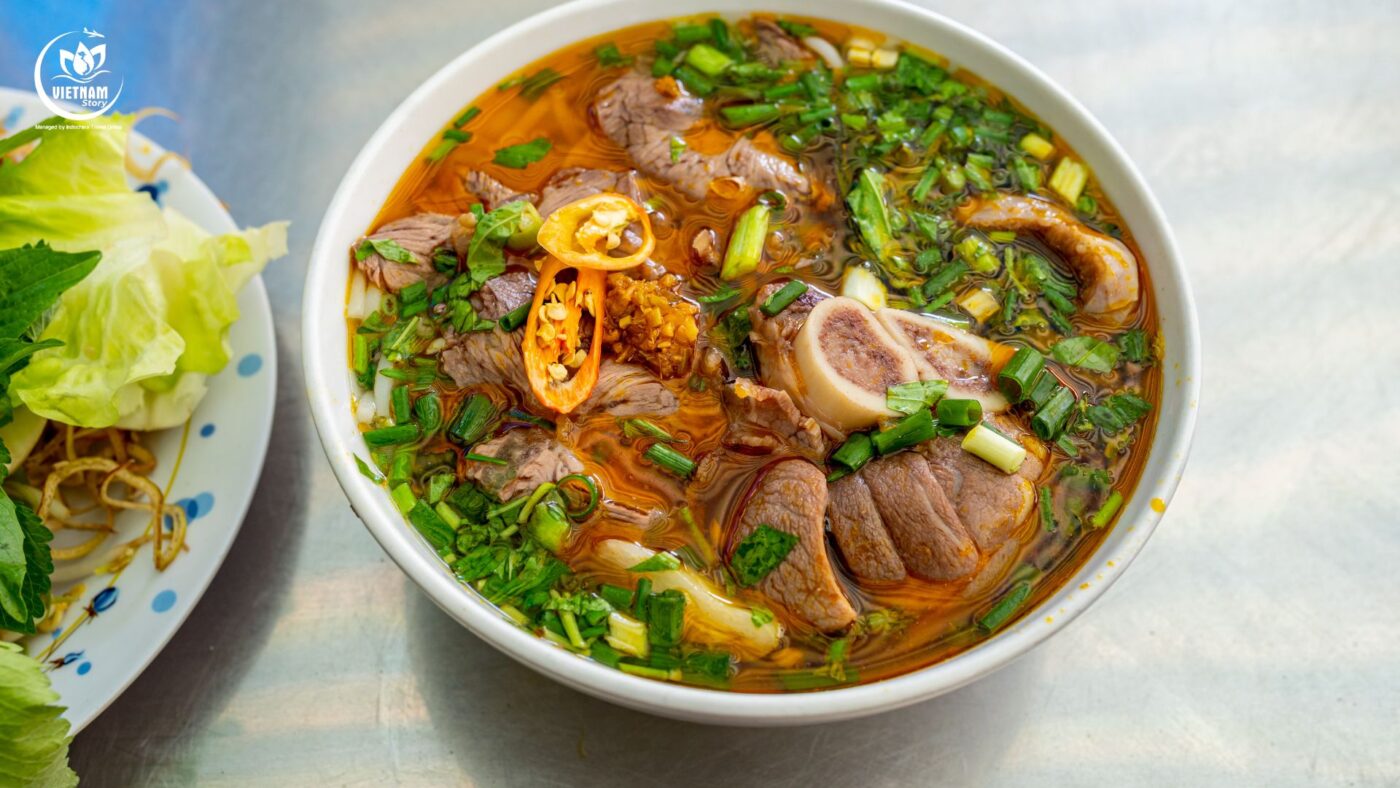
- Bun hen (Clams vermicelli soup): This light and refreshing soup features fresh clams, vermicelli noodles, and a variety of herbs. The broth is delicate and flavorful, with a hint of sweetness.
- Banh beo (Steamed rice cake): These tiny, bite-sized rice cakes are steamed and topped with a mixture of shrimp paste, ground pork, and herbs. They’re often served with a dipping sauce of fish sauce, chili peppers, and lime juice.
- Banh nam (Steamed rice cake with turmeric): This savory rice cake is made with turmeric, giving it a vibrant yellow color. It’s filled with a mixture of pork and shrimp and served with a dipping sauce of fish sauce, sugar, and chili peppers.
- Banh ram it (Crispy rice cake with sticky rice): This snack combines crispy fried rice cakes with chewy sticky rice balls. The rice cakes are often seasoned with salt and pepper, while the sticky rice balls are filled with mung bean paste or sweet potatoes.
- Banh xeo (Savoury Vietnamese crepe): This thin, crispy crepe is made with rice flour, coconut milk, and turmeric. It’s filled with a mixture of shrimp, pork, and vegetables and served with a dipping sauce of fish sauce, chili peppers, and lime juice.
- Cha Hue (Hue sausage): This unique sausage is made with a mixture of pork, fish, and spices. It’s often served as a snack or appetizer, grilled or deep-fried.
- Banh it la gai (Sticky rice cake with wild leaves): This sticky rice cake is wrapped in fragrant wild leaves, giving it a distinctive aroma and flavor. It’s often filled with a sweet mung bean paste or a savory mixture of pork and shrimp.
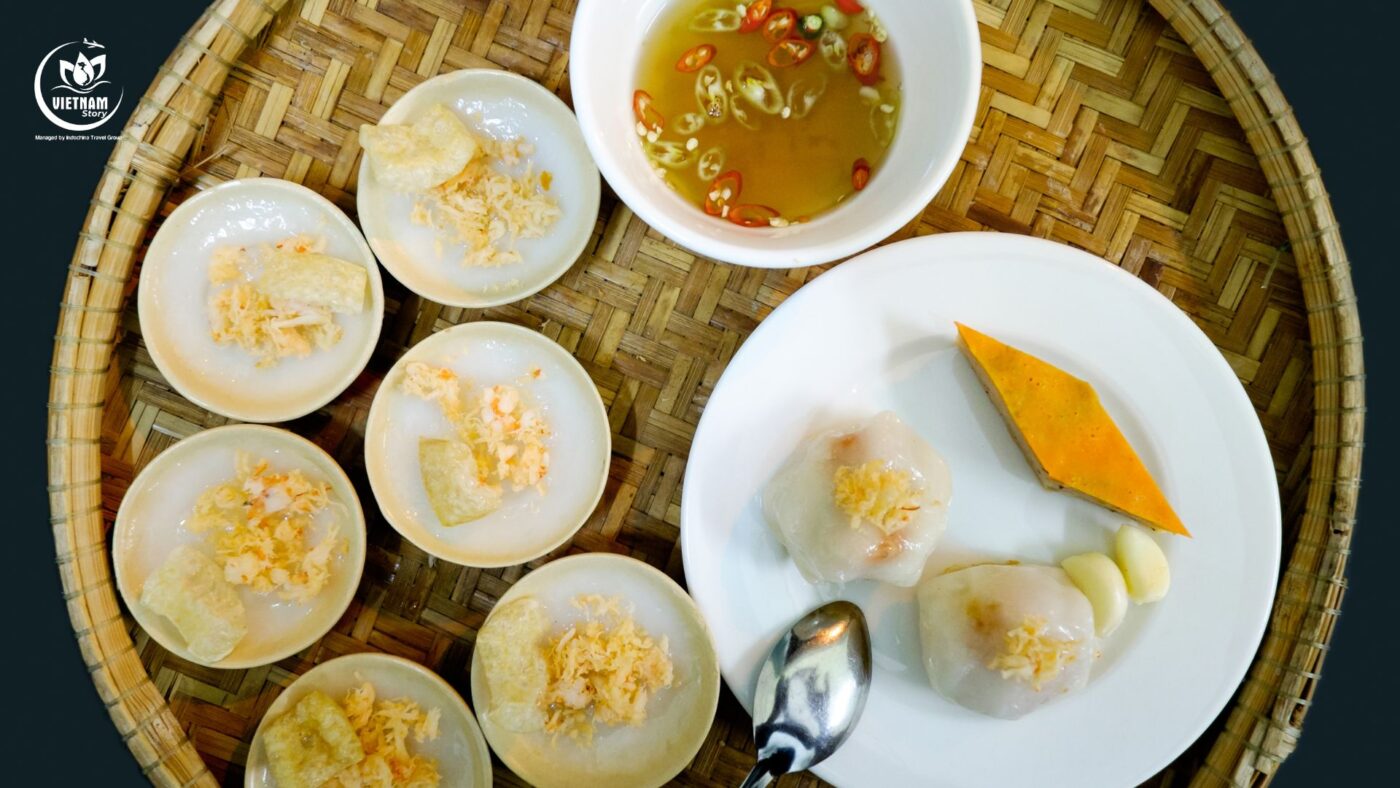
- Banh loc (Dumpling with tapioca starch): These steamed dumplings are made with tapioca starch and filled with shrimp or pork. They’re often served with a dipping sauce of fish sauce, chili peppers, and lime juice.
- Com hen (Clams rice): This simple yet flavorful rice dish is made with clams, herbs, and spices. The clams are cooked with garlic, ginger, and chili peppers, then added to the rice along with a variety of herbs like cilantro, basil, and mint.
- Nem chua (Fermented pork sausage): This sour and spicy sausage is made with pork, garlic, and spices. It’s fermented for several days, giving it a distinctive sour flavor. It’s often served as a snack or appetizer, wrapped in lettuce or rice paper.
- Banh canh ca loc (Fish noodle soup): This light and flavorful soup features fish broth, fish, and flat rice noodles. The fish broth is often made with a combination of fish bones, lemongrass, and turmeric.
- Thit kho tau (Braised pork belly with eggs): This hearty and flavorful dish features braised pork belly with hard-boiled eggs. The pork is cooked in a rich broth of fish sauce, sugar, and spices. It’s often served with steamed rice.
- Bun mam nem (Fish sauce noodles): This flavorful and fragrant noodle dish features fish sauce, pork, and vegetables. The fish sauce is used to make a flavorful broth, which is then simmered with pork, vegetables, and vermicelli noodles.
- Banh trang cuon thit heo (Pork spring rolls): This thin rice paper roll is filled with grilled pork, vegetables, and herbs. It’s often served with a dipping sauce of fish sauce, chili peppers, and lime juice.
- Banh ep (Pressed cake): This sweet and chewy dessert is made with tapioca starch, coconut milk, and sugar. It’s often flavored with pandan leaves, giving it a unique aroma.
Popular Restaurants
- Ancient Hue Restaurant: A traditional restaurant serving authentic Hue cuisine.
- Le Duong Restaurant: Offers a more refined dining experience with a focus on Vietnamese cuisine.
Vietnam Itineraries in Hue
Gift Ideas for Indian Tourists
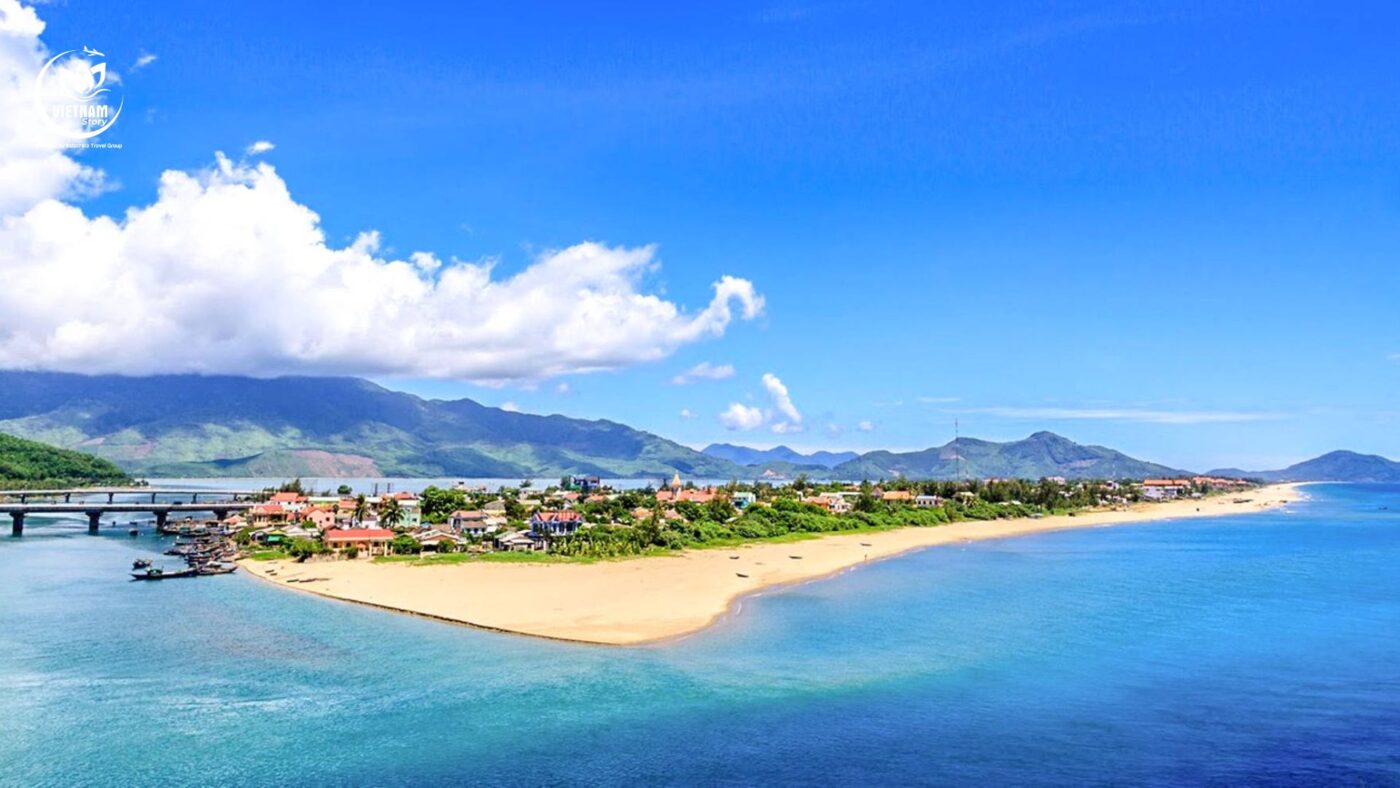
Handicrafts
- Conical Hats (Nón Lá): Widely available in various styles and materials, reflecting Hue’s cultural identity.
- Silk Products: Look for hand-woven silk scarves, áo dài (traditional Vietnamese dress), and other items.
- Lacquerware: Hue is famous for its exquisite lacquerware, ranging from decorative boxes to furniture.
- Wood Carvings: Highly detailed and intricate wood carvings are available, depicting traditional themes or animals.
- Ceramic Products: Hue offers a variety of ceramic items, from teapots and bowls to decorative sculptures.
- Bronze Products: Hue’s bronzeware tradition is reflected in beautiful vases, figurines, and other items.
Local Products
- Tea: Hue is known for its high-quality tea, with various varieties like green tea, black tea, and jasmine tea.
- Coffee: Explore the local coffee beans and enjoy a cup of traditional Vietnamese coffee.
- Hue Royal Cuisine Ingredients: Pick up spices like star anise, cinnamon, and cardamom used in Hue’s cuisine.
- Local Snacks: Try the unique snacks of Hue like “Bánh bèo” or “Bánh ram ít.”
Shopping Spots
- Dong Ba Market: A bustling market offering a wide variety of goods, including handicrafts, local products, and clothing.
- Ancient Town: Browse the charming shops in the Ancient Town for souvenirs, handicrafts, and unique finds.
- Artisan Villages: Visit villages specializing in specific crafts, like the Conical Hat Village or the Lacquerware Village.
Tips
- Negotiate Prices: Practice your bargaining skills to get the best deals.
- Shop Locally: Support local artisans and businesses by buying from them directly.
- Ask Questions: Don’t hesitate to ask questions about the products and their craftsmanship.
Hue, with its rich history, tranquil atmosphere, and captivating cultural experiences, offers Indian travelers a unique and memorable journey through Vietnam’s past.
Vietnam Tour Packages with Hue Highlights
15 Days 14 Nights
Discover Beauty Of Vietnam And Cambodia 15-Day Tour
Hanoi - Ninh Binh - Halong bay - Danang - Bana hill - Golden Bridge - Nha Trang - Dalat - Ho Chi Minh - Siem Reap
5 days 4 nights
Chalo South and Center Vietnam
Ho chi Minh - Cu Chi tunnels - Mekong Delta - Danang - Bana hill - Golden Bridge
8 days 7 nights
Unforgettable Experiences of Vietnam discovery
Ho Chi Minh - Cu CHi tunnels - Mekong Delta - Danang- Bana hill - Golden Bridge - Hanoi - Ninh Binh - Trang An - Halong bay - Overnight on cruise
12 days 11 nights
12-Day Fantastic Cambodia And Vietnam Trip
Siem Reap - Angkor wat - Hanoi - Ninh Binh - Halong bay - Danang - Hue - Hoian



